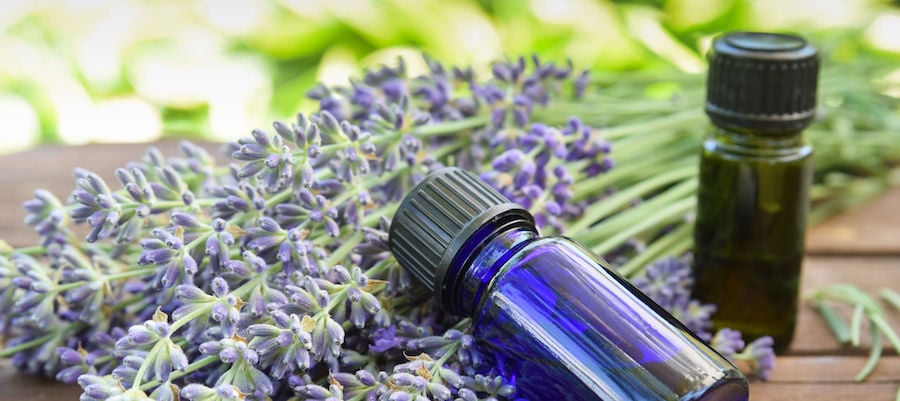At American College of Healthcare Sciences, we promote and educate about a wide range of wellness modalities designed to support stress and strategies to practice intentional relaxation and self-care. Aromatherapy is one of our favorite wellness tools to support stress - and it may be easier thank you think to add to your everyday routine.
Managing Stress
Cortisol, also known as the stress hormone, is part of your body’s natural response to stress. But according to a recent APA article, prolonged stress can have chronic impacts. When it’s released at high levels, or when it's not allowed to disperse due to chronic stress, it can decrease your immunity, bone density, and overall quality of life.
Practicing consistent and intentional self-care is essential for long-term wellness. It allows you to support your body’s natural relaxation response by keeping your body’s cortisol levels balanced and healthy. Self-care helps you manage stress before it becomes constant, and aromatherapy can be used to prevent excess stress from taking root in the body.
How Does Aromatherapy Work?
Aromatherapy triggers the relaxation response necessary for self-care. That response can be triggered by doing any relaxing activity you enjoy, such as deep breathing, walking, and self-massage. Triggering the relaxation response has many health benefits including slowing breathing rate, decreasing heart rate, decreasing blood pressure, and relaxing muscles.
Making time for yourself every day is key. Even if it’s only for a few moments between clients, car and home maintenance, or daily chores, you can create space for meaningful self-care. Aromatherapy is flexible and portable, and essential oils can be easily implemented into your everyday health routine.
Building Aromatherapy Into Your Daily Routine
1. Inhalation
One of the most popular ways to experience aromatherapy is through inhalation. Simply open the bottle and waft the scent around the room, or place a few drops into a diffuser to allow the scent to fill the room. Inhale deeply.
2. Bathing
Adding essential oils to your bathing routine is another easy way to incorporate them into your preexisting habits. When bathing with essential oils, add a few drops to a carrier oil or whole milk, then add the full mixture to your bath and enjoy the scent while you relax.
Here’s a recipe for a White Sage Bath Soak:
Ingredients:- 1-3 drops of White Sage Oil Salvia apiana (Safe Usage Recommendation: To achieve a safe dilution ratio for a whole-body topical application, white sage oil can be used at 1- 2%)
- 10 ml (1/3 oz) Base Oil of your choosing or Whole Milk
- Blend 1 to 3 drops with a dispersant such as whole milk or base oil.
- Fill bath with warm water.
- Once the bath is full add the entire diluted mixture into the water. Give the mixture a good swish to ensure proper dispersal.
- Enjoy!
This recipe can also be used for a foot or hand soak.
3. Skin Care
Essential oils can be added to skincare products like soaps and cleansers for a relaxing effect. You can also dilute essential oil into a carrier oil for safe topical application. You’ll be able to feel clean and fresh with essential oil-enhanced skincare.
Safe Use Recommendation: Before applying essential oils topically, it’s important to test the oil over a 24-hour period in 3-4 topical applications to ensure there is no allergic reaction.
Here’s a recipe for a White Sage Roller Bottle:
Ingredients:
- 3 drops White Sage Oil Salvia apiana
- 10ml (1/3 oz) Carrier Oil
Instructions:
- Combine essential oil and carrier oil into glass roller bottle.
- After testing, apply topically.
- Enjoy!
Making Your Own Blend
Using single essential oils is a great choice for beginners to aromatherapy, but if you have more time, you can also create a personal blend. Both single essential oils and blends have therapeutic properties, so you can decide what’s right for you.
If you choose to make a blend, pick essential oils with calming or uplifting properties. Here are a few of our favorite essential oils for simple, stress-support blends:
- Anise Pimpinella anisum
- Basil Ocimum basilicum
- Clary sage Salvia sclarea
- Geranium Pelargonium graveolens
- Lavender Lavandula angustifolia
- Nutmeg Myristica fragrans
- Rose attar Rosa damascena
- Rosemary Rosmarinus officinalis
- Sweet orange Citrus sinensis
- Ylang ylang Cananga odorata
Learn more about creating essential oil blends and the basics of aromatherapy for everyday wellness in our free ebook.
Check Out the Apothecary Shoppe
Regardless of your mood or stress level, aromatherapy and self-care can help you manage your cortisol levels and practice intentional relaxation.
To find more essential oils and sample blends that can be used in your everyday self-care routine, check out the essential oils in ACHS’s shop, the Apothecary Shoppe.
Disclaimer
This article is for informational purposes only. It is not intended to treat, diagnose, cure, or prevent disease. This article has not been reviewed by the FDA. Always consult with your primary care physician or naturopathic doctor before making any significant changes to your health and wellness routine.





